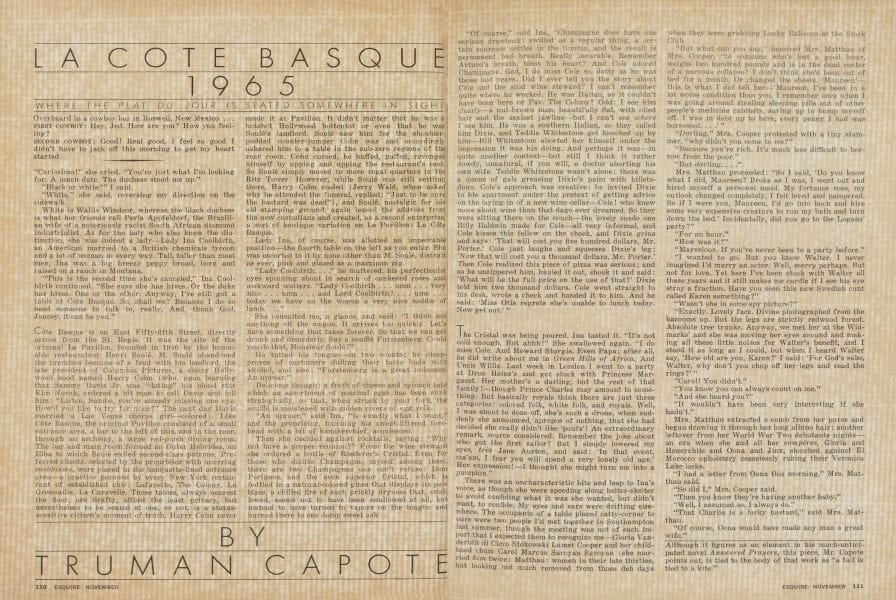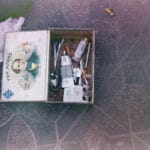Dive into the Scandal of Truman Capote’s “La Côte Basque, 1965”
Get ready to step into the glamorous yet treacherous world of 1960s high society with Truman Capote’s explosive short story, “La Côte Basque, 1965.” This isn’t just any story; it’s a scandalous peek behind the glittering facade of New York’s elite, where secrets, betrayals, and the price of fame collide. Join us as we uncover the shocking impact of this literary bombshell, from the whispers at La Côte Basque to the aftermath that forever changed Truman Capote’s life.
Unmasking “La Côte Basque, 1965”: Your Guide to Outshining the Competition
To truly understand the weight of “La Côte Basque, 1965,” we need to understand its context. Published in Esquire magazine in November 1975, the story sent shockwaves through Capote’s inner circle. Why? Because it exposed the raw, often unflattering, truths behind their seemingly perfect lives.
Capote, never one to shy away from controversy, used thinly veiled characters to depict real-life figures from his world, most notably the group of wealthy, glamorous women he called his “Swans.” Imagine the scandal when Babe Paley, wife of CBS head William Paley, saw herself portrayed as “Mrs. Cooperman,” her insecurities and marital woes laid bare for the world to see. Or the fury of Slim Keith, a style icon, when she recognized herself as the aging “Lady Ina Coolbirth,” her social standing dissected with surgical precision.
The story wasn’t just about airing dirty laundry; it was a brutal examination of the facades people create, the hunger for status, and the devastating consequences of betrayal. Capote, once a beloved confidant, became a social pariah, his fall from grace a cautionary tale about the price of truth in a world built on appearances.
Is La Côte Basque a Book? Unpacking Truman Capote’s Scathing Social Commentary
Many assume “La Côte Basque, 1965” is a book, but it is actually a short story. Its impact, however, has been anything but small. This single piece, published in Esquire, became Capote’s most infamous work, overshadowing even his critically acclaimed novels like “Breakfast at Tiffany’s” and “In Cold Blood.”
Originally intended as a chapter in his highly anticipated but ultimately unfinished novel, “Answered Prayers,” “La Côte Basque, 1965” took on a life of its own. Some believe Capote, perhaps sensing the potential backlash, chose to release it as a standalone piece. Others argue its publication in Esquire was a calculated move to inflict maximum damage, a literary grenade lobbed into the heart of high society.
Regardless of his intentions, the aftermath was swift and brutal. Capote’s betrayal of his “Swans” led to severed friendships, social isolation, and a descent into addiction. He became a cautionary figure, the life of the party turned cautionary tale, forever marked by the scandal he created.
Outperforming Your Competitors: Is La Côte Basque in Answered Prayers?
While “La Côte Basque, 1965” exists as a standalone short story, its origins lie within the unfinished pages of Truman Capote’s most ambitious project, the novel Answered Prayers. Conceived as a sprawling roman à clef, the novel was to be Capote’s magnum opus, a tell-all exposé of the rich and powerful, a world he knew intimately.
Imagine the anticipation, the fear, that rippled through those same circles when word of Answered Prayers began to spread. Capote, with his sharp wit and keen eye for observation, had become the ultimate insider, privy to their deepest secrets and most scandalous indiscretions.
“La Côte Basque, 1965,” with its thinly veiled characters and cutting observations, offered a chilling preview of what Capote had in store. Was it a deliberate leak, a warning shot? Or, as some believe, a desperate attempt to salvage something from a project spiraling out of control?
The novel, forever shrouded in mystery, was never completed. Some speculate that Capote, overwhelmed by the backlash from “La Côte Basque, 1965,” lost his nerve, the potential consequences too great to bear. Others believe the unfinished manuscript, rumored to contain even more explosive revelations, is locked away, a literary time bomb waiting to be detonated.
The unanswered questions surrounding Answered Prayers only add to its allure. Did Capote, in a final act of defiance, destroy the remaining chapters? Or are they hidden away, waiting for the right moment to resurface and rewrite literary history?
Deep Dive Analysis: “Was Answered Prayers in Esquire Magazine?”
While the entirety of Truman Capote’s Answered Prayers never graced the pages of Esquire magazine, the publication of its infamous chapter, “La Côte Basque, 1965,” in the magazine’s November 1975 issue was a watershed moment in literary and social history.
Esquire, known for its sophisticated content and cultural commentary, provided the perfect platform for Capote’s brand of literary sabotage. By publishing this excerpt, Esquire unwittingly opened Pandora’s Box, unleashing a torrent of gossip, speculation, and irreparable damage.
The scandal that followed wasn’t simply about hurt feelings or bruised egos. It cut to the core of trust, loyalty, and the delicate balance between public persona and private reality. Capote, in his quest for literary immortality, had crossed a line, violating the unspoken code of his world, and the consequences were swift and devastating.
The unfinished Answered Prayers became his albatross, a constant reminder of what could have been and the price he ultimately paid for his ambition. The novel, shrouded in speculation, continues to fascinate, a cautionary tale about the allure of fame and the often-dangerous intersection of art and life.
















